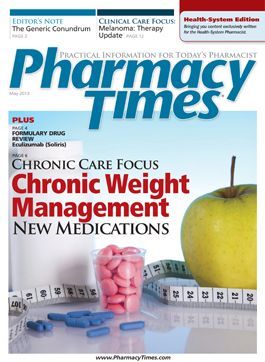The Generic Conundrum
Questions have arisen regarding the standards for determining whether a generic medication is bioequivalent to the branded version.

A question worth discussing was posed in the January 14, 2013, edition of Fortune: Are generics really the same as branded drugs?1 To many of you, the quick answer is “yes.” If the generic medication was determined by the FDA to be an Approved Drug Product with Therapeutic Equivalence,2 then it is appropriate to substitute the brand name prescription for a generic product when the prescriber or institutional policy has allowed for this. It is also apparent to all of us that generic medications are used frequently, comprising about 80% of all dispensed prescriptions in 2012.
A smaller group of people, albeit a growing one, will answer the question with a resounding “no.” These people usually have direct patient experience with someone who had difficulty when going from the branded product to a generic substitution. The expressed issues might be a different side effect not previously observed or a blunted therapeutic response from what was previously achieved with a different manufacturer’s product.
The article in Fortune was written by Katherine Eban, an investigative journalist. She discusses the FDA reversal of a medication it had previously granted bioequivalence. Bupropion XL, the generic made by Teva Pharmaceuticals, is the medication that was highlighted. The situation started when numerous individuals were calling the radio program “The People’s Pharmacy” to describe their concerns with generic medications. As discussed in Joe and Terry Graedon’s book, “Top Screwups Doctors Make and How to Avoid Them," a study was initiated to test the bioequivalence of the Teva Pharmaceuticals product.
Results demonstrated that the generic bupropion, on average, achieved 75% of the expected concentration within the blood compared with the standard. In addition, since this generic had a different time-release method, it dissolved 4 times faster within the first 2 hours than the standard. It is presumed that these differences led to the patient concerns that were expressed on the radio show. This product is not on the market.
Currently, bioequivalence is determined by detecting between 80% and 125% of the active ingredient within the blood.3 This is true for both the max concentration and the area under the curve. There is no required evaluation for time to peak concentration, but it could be reviewed as a part of the bioequivalence process.
With all of these known bioequivalence issues and concerns, should hospital pharmacy and therapeutics committees or pharmacy department purchasers approach the selection of products differently? How about group purchasing organizations? Many times, the decision process stops if the products are all AB-rated generics. After that, the cheapest one will be selected. With the move to bar-coded medication administration, some organizations limit their purchases to the same manufacturers or those that are bar-code ready.
However, as a clinical profession, are we comfortable with a bioequivalence range of 80% to 125%? Shouldn’t health care professionals expect a smaller range of variation? Should pharmacy departments review the bioequivalence information as a part of the purchasing selection of a medication as opposed to just accepting the FDA review? Do our patients deserve more individual product scrutiny before switching to a different manufacturer? Should the profession pressure the FDA for tighter standards?
While there are many steps that go into selecting and purchasing a medication to be used in the hospital setting, we probably should also consider bioequivalence in addition to all of the other safety measures. Our patients deserve no less.
Stephen F. Eckel, PharmD, MHA, BCPS, FASHP, FAPhA, is assistant director of pharmacy, University of North Carolina Hospitals and clinical assistant professor, University of North Carolina Eshelman School of Pharmacy.
References:
- Eban K. Are generics really the same as branded drugs? Fortune, January 14, 2013:89-91.
- Approved Drug Products with Therapeutic Equivalence Evaluations. http://en.wikipedia.org/wiki/Approved_Drug_Products_with_Therapeutic_Equivalence_Evaluations. Accessed March 29, 2013.
- Bioequivalence. http://en.wikipedia.org/wiki/Bioequivalence. Accessed March 29, 2013.

